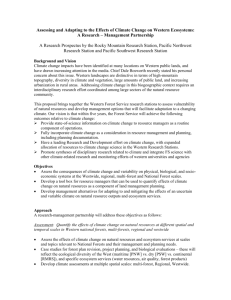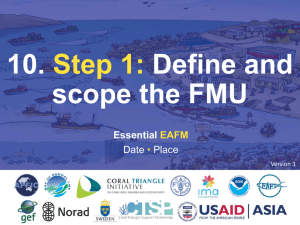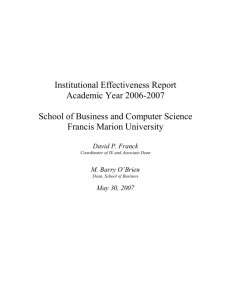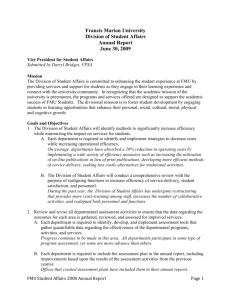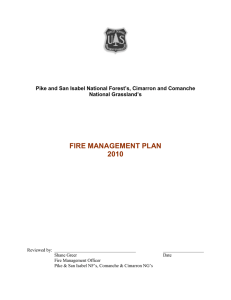FO:NAFC/2002/11
advertisement
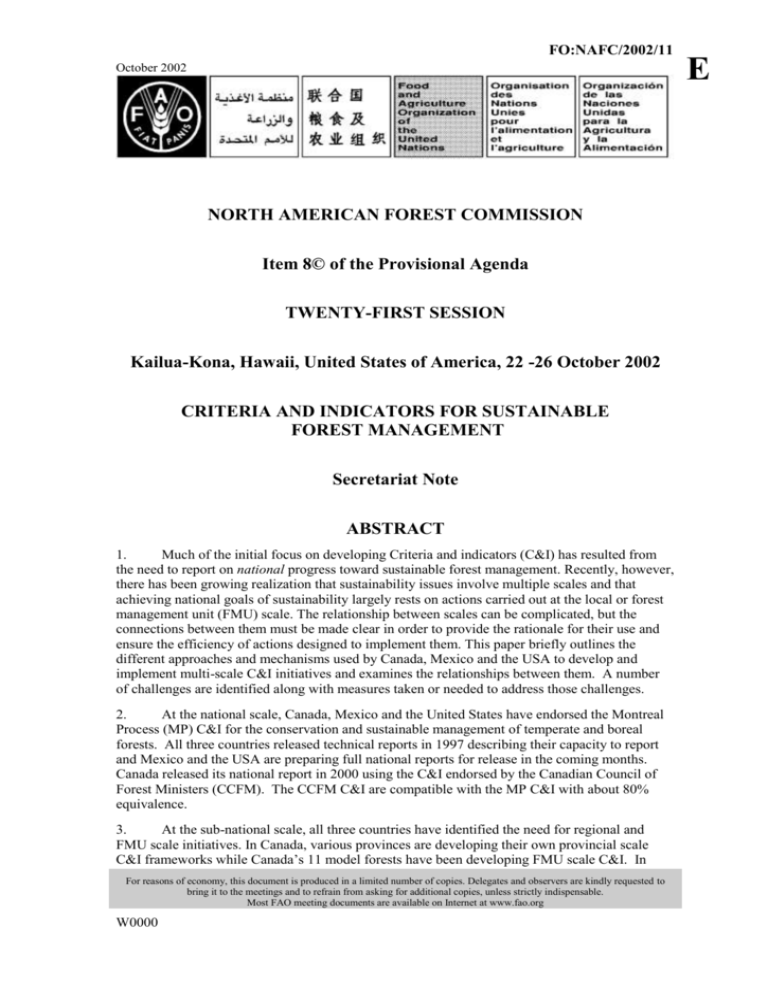
FO:NAFC/2002/11 October 2002 NORTH AMERICAN FOREST COMMISSION Item 8© of the Provisional Agenda TWENTY-FIRST SESSION Kailua-Kona, Hawaii, United States of America, 22 -26 October 2002 CRITERIA AND INDICATORS FOR SUSTAINABLE FOREST MANAGEMENT Secretariat Note ABSTRACT 1. Much of the initial focus on developing Criteria and indicators (C&I) has resulted from the need to report on national progress toward sustainable forest management. Recently, however, there has been growing realization that sustainability issues involve multiple scales and that achieving national goals of sustainability largely rests on actions carried out at the local or forest management unit (FMU) scale. The relationship between scales can be complicated, but the connections between them must be made clear in order to provide the rationale for their use and ensure the efficiency of actions designed to implement them. This paper briefly outlines the different approaches and mechanisms used by Canada, Mexico and the USA to develop and implement multi-scale C&I initiatives and examines the relationships between them. A number of challenges are identified along with measures taken or needed to address those challenges. 2. At the national scale, Canada, Mexico and the United States have endorsed the Montreal Process (MP) C&I for the conservation and sustainable management of temperate and boreal forests. All three countries released technical reports in 1997 describing their capacity to report and Mexico and the USA are preparing full national reports for release in the coming months. Canada released its national report in 2000 using the C&I endorsed by the Canadian Council of Forest Ministers (CCFM). The CCFM C&I are compatible with the MP C&I with about 80% equivalence. 3. At the sub-national scale, all three countries have identified the need for regional and FMU scale initiatives. In Canada, various provinces are developing their own provincial scale C&I frameworks while Canada’s 11 model forests have been developing FMU scale C&I. In For reasons of economy, this document is produced in a limited number of copies. Delegates and observers are kindly requested to bring it to the meetings and to refrain from asking for additional copies, unless strictly indispensable. Most FAO meeting documents are available on Internet at www.fao.org W0000 E 2 FO:NAFC/2002/11 most cases, the provincial and FMU scale C&I are based on the CCFM C&I. The Mexican model forests have also been engaged in developing FMU scale C&I initiatives in that country. Currently, pilot tests of FMU scale C&I are either underway or being explored for both temperate and tropical forest ecosystems. In the USA there are a large number of regional C&I initiatives involving single states, collections of states and ecologically significant regions. In the northeast, 20 states have agreed to use a sub-set of the MP indicators to report on progress for the 20 statearea and for individual states. At the FMU level, the recent CIFOR-NA test examined C&I for use at the local level and the Local Unit C&I Development (LUCID) test has been developing FMU scale specific C&I at six locations throughout the US to identify a core suite of FMU scale C&I. 4. A number of challenges to further development of C&I at multiple scales exist. Concepts of sustainability vary at different scales and C&I frameworks must be flexible and adaptable over time. It is important to realize that sustainability is a human value, not a fixed independent state of social, economic and ecological affairs. As society’s values around sustainability change over time, C&I frameworks will need periodic revision to ensure that they continue to accurately and efficiently report on progress towards sustainable forest management. National and FMU scale C&I help answer questions unique to their scale and provide feedback for different kinds of purposes and decisions at other scales. Managing for sustainability requires thinking across all scales, but monitoring and assessing sustainability must be based on the recognition that different questions and different methods are appropriate for different scales. Gathering appropriate data continues to be a significant challenge to C&I reporting although progress is being made with initiatives like National Forest Inventories. Reporting has typically been easiest for environmental and economic indicators as they often rely on data traditionally collected in forest resource inventories or on general economic data. However, work is needed in developing effective, measurable indicators of social values and non-timber goods for many C&I processes. 5. There are a number of options the Commission may consider to promote further development of C&I and increase our understanding of the relationships between C&I at different scales including: continuing to use membership in the MP as a way to exchange information; promoting involvement in the International Model Forest Network; continuing to promote testing of sub-national C&I; promoting inventory and monitoring initiatives that increase the ability to measure indicators at various scales; and supporting research initiatives into C&I.

